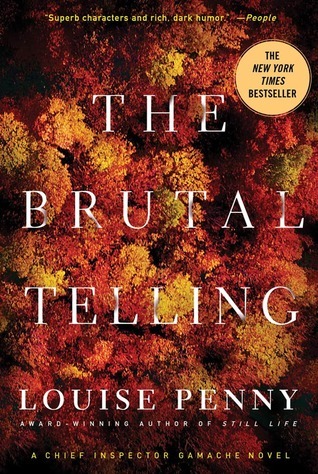
The Blurb (from Goodreads):
My Thoughts:
I’ve really enjoyed all of Louise Penny’s earlier books in the Inspector Gamache crime series, but have had this one sitting on my shelf for ages, waiting for me to read. Having met Louise Penny at the Perth Writers Festival this year (she is lovely!), I decided to catch up on the series.
Her books have mostly centred on the fictional town of Three Pines in the province of Quebec in Canada, with an array of loveable and eccentric locals who appear again and again. They include a gay couple who run the local bistro, a warm-hearted second-hand bookseller, a couple of married artists, and a foul-mouthed old woman who is an award-winning poet and has a pet duck called Rosa. Describing the series in this way, the books sound like cosy murder mysteries, and there is certainly plenty of warmth and humour. However, the depth of characterisation, the lyrical writing, and the darkness of the human psyche revealed both in the murders and the inner lives of the characters lift this series out of the ordinary.
The Brutal Telling centres on the murder of an old hermit who has lived hidden away in the forest outside Three Pines for decades with no-one – or nearly no-one - aware of his existence.
To Inspector Gamache’s surprise, he discovers the old man’s wooden hut is filled with antique treasures (such as a priceless first edition copy of Jane Eyre published under the pseudonym Currer Bell, something I myself would very much like to own.) His quest to find the murderer also leads him to follow in the footsteps of Emily Carr, the first Canadian artist to embrace Fauvism and Post-Impressionism. I have been interested in Emily Carr since reading The Forest Lover, a novel by Susan Vreeland that is inspired by her life, and so was really intrigued by this section of The Brutal Telling. This combination of warmth, intelligence and psychological depth combine to make Louise Penny’s books a cut above most contemporary crime novels and so I urge you to read one if you’ve never tried her before. But start at the beginning, with Still Life, as this series has a strong character arc.

